The world of tattoo art is filled with myriad designs, each carrying its own symbolism and significance. One such design that has gained immense popularity in recent years is the Buddha tattoo. With its serene aura and spiritual undertones, a Buddha tattoo can serve as a powerful expression of one’s beliefs and values. In this article with Impeccable Nest, we delve into the profound meaning behind Buddha tattoos, explore their significance, and discuss various design options to help you make an informed choice.
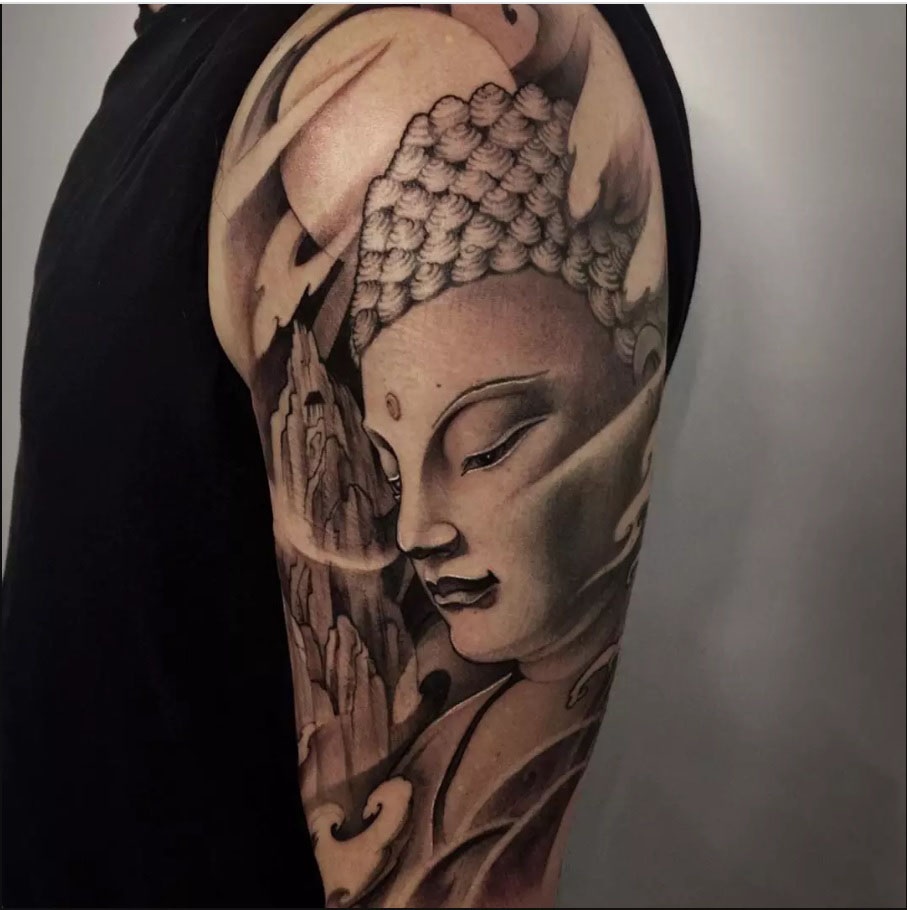
The Essence of Buddha Tattoo Meaning
When it comes to understanding the meaning of a Buddha tattoo, it is crucial to grasp the essence of Buddhism and its teachings. Buddha, whose birth name was Siddhartha Gautama, was a spiritual teacher who lived in ancient India. He achieved enlightenment and became the Buddha, meaning “the awakened one.” Buddhists view him as the supreme enlightened being, embodying compassion, wisdom, and inner peace.
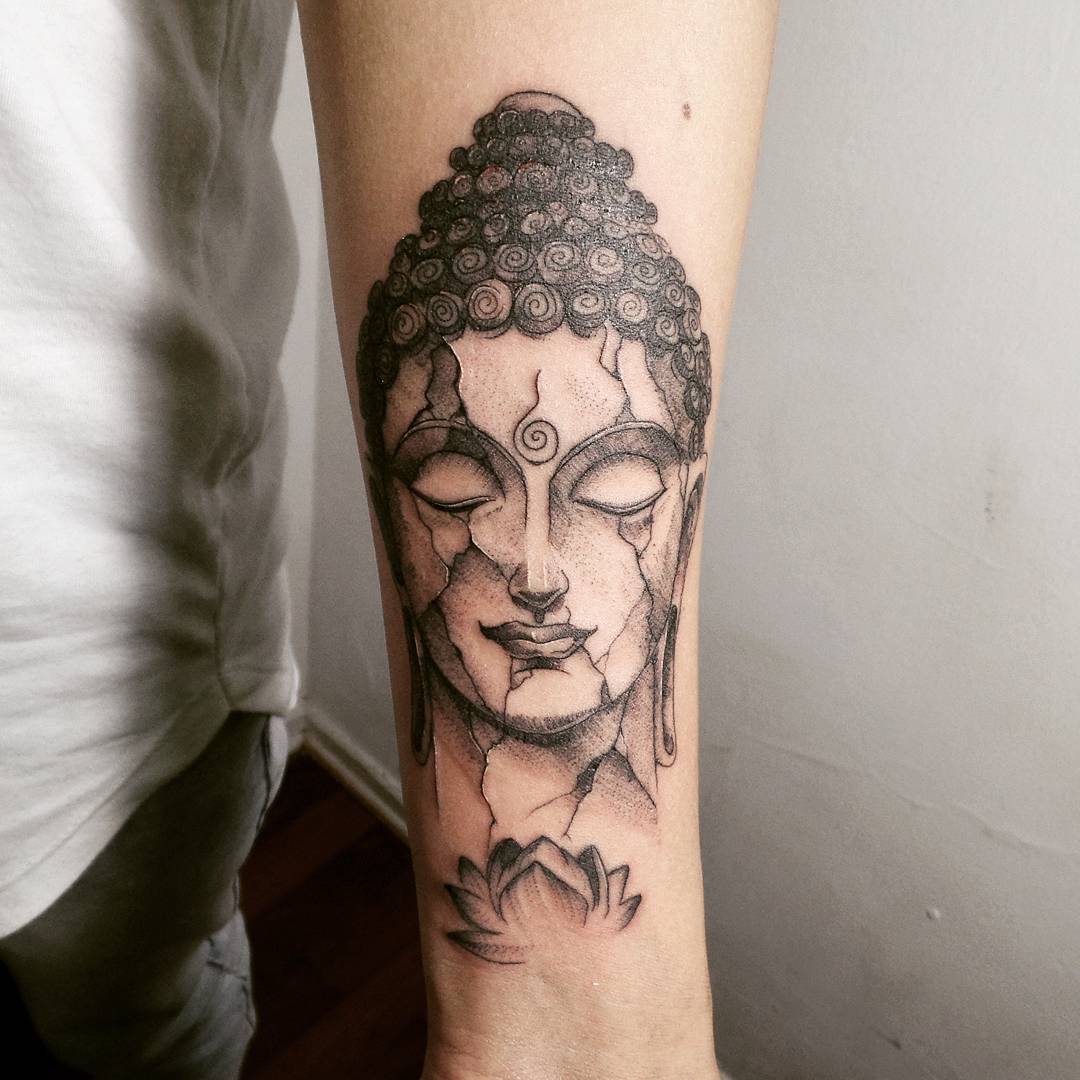
A Buddha tattoo represents more than just an artistic design; it symbolizes a deep connection with Buddhist philosophy and serves as a reminder to strive for spiritual growth and enlightenment. It acts as a constant source of inspiration, guiding individuals on their journey towards self-discovery and inner harmony.
Buddha Tattoo Meaning: Unveiling the Symbolic Power
The meaning behind a Buddha tattoo transcends its visual representation. Each element within the design carries significance, contributing to the overall message conveyed by the tattoo. Here are some common elements found in Buddha tattoos and their meanings:
Buddha’s Face
A tattoo featuring Buddha’s face is a powerful symbol that holds deep meaning and significance. It represents enlightenment, wisdom, and serenity, embodying the core principles of Buddhism. The image of Buddha’s serene expression reflects the attainment of inner peace and spiritual understanding.
Enlightenment signifies the awakening of the mind and the realization of ultimate truth. It symbolizes a profound transformation, transcending the cycle of suffering and rebirth. By choosing to ink Buddha’s face on one’s body, a person expresses their aspiration for personal growth and spiritual development. It serves as a constant reminder to seek knowledge, deepen understanding, and expand consciousness.
Wisdom is an essential aspect of Buddhist teachings, emphasizing the importance of acquiring knowledge and insight. Buddha’s face, with its contemplative gaze and serene smile, represents the wisdom gained through introspection and meditation. As a tattoo, it becomes a symbol of wisdom sought after and acquired, reminding the bearer to cultivate discernment, make thoughtful choices, and navigate life with sagacity.
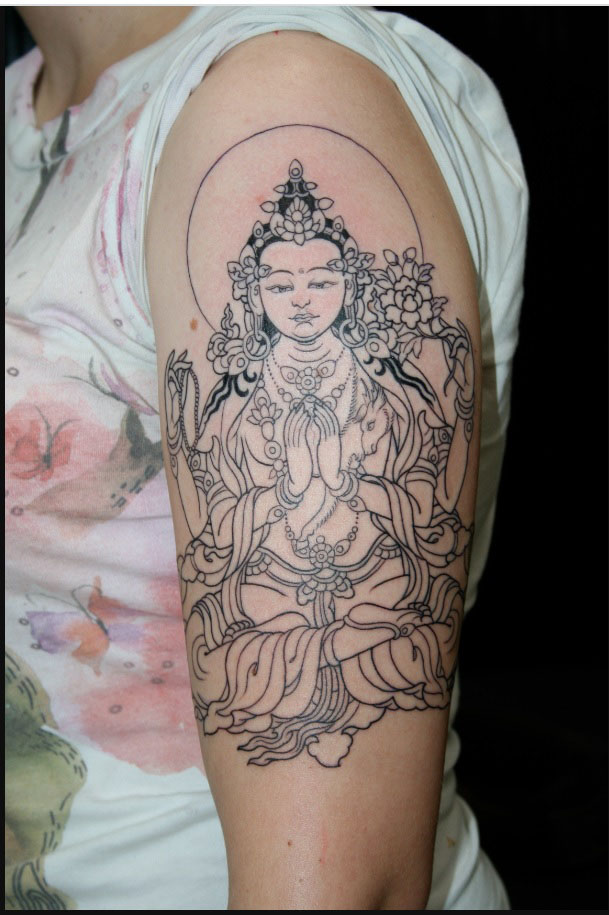
Serenity is a state of tranquility and inner calmness, free from disturbances and turmoil. Buddha’s peaceful countenance embodies this quality, radiating a sense of tranquility and equanimity. Having his face as a tattoo signifies the desire to attain serenity amidst the chaos of everyday life. It serves as a constant reminder to remain composed, maintain emotional balance, and find solace in times of adversity.
Incorporating a tattoo featuring Buddha’s face into one’s life is a personal commitment to live in alignment with these qualities—enlightenment, wisdom, and serenity. It acts as a visual representation of the individual’s dedication to self-improvement, spiritual growth, and the pursuit of inner peace. By having this sacred symbol permanently etched on their skin, individuals carry a potent reminder to consciously cultivate these qualities in their thoughts, actions, and interactions with others.
It is crucial to approach such a tattoo with respect and understanding of its cultural and religious significance. Buddhism is a diverse and ancient tradition, and it is important to honor its teachings and symbols appropriately. Before getting a Buddha face tattoo, one should thoroughly research Buddhist philosophy and consult with a knowledgeable artist who can ensure the design is respectful and accurate.
Lotus Flower
The lotus flower holds significant meaning in Buddhist culture, serving as a powerful symbol that embodies purity and spiritual awakening. Its portrayal in various artistic forms, scriptures, and teachings showcases its importance in the Buddhist philosophy.
One of the most profound aspects associated with the lotus flower is its ability to rise above murky waters and emerge pristine and beautiful. This characteristic serves as a metaphor for the human potential to transcend worldly attachments and desires, achieving spiritual enlightenment and liberation from suffering.
The lotus blooms in muddy ponds, yet it remains untouched by impurities. Similarly, individuals are encouraged to navigate through the turbulences of life without being tainted by negative influences or succumbing to temptations. The lotus represents the path of righteousness and ethical conduct, reminding practitioners to lead virtuous lives while maintaining inner purity.
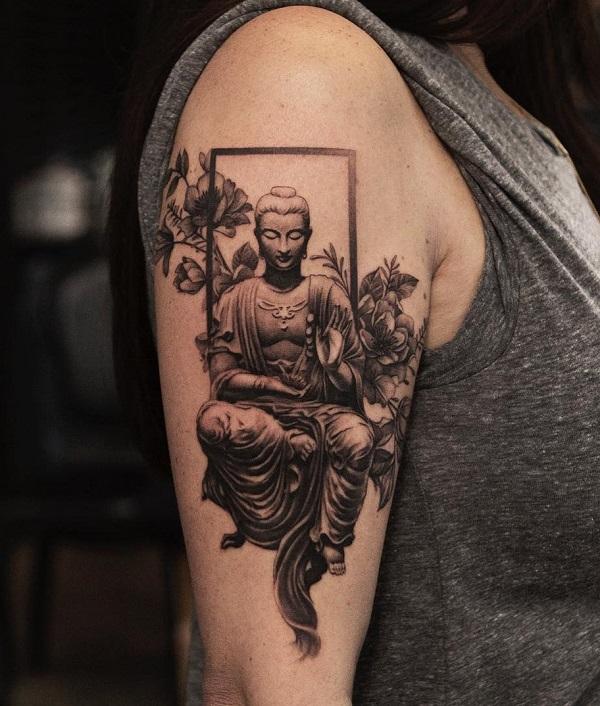
Moreover, the unfolding of the lotus petals symbolizes the gradual unfolding of one’s spiritual consciousness. Just as the lotus bud gradually opens up to reveal its captivating beauty, individuals embark on a journey of self-discovery and personal growth, gradually uncovering their true nature and innate wisdom.
In Buddhism, the different stages of the lotus flower’s growth represent various levels of spiritual realization. The closed bud signifies a dormant state, representing ignorance or unawareness. As the bud reaches the surface of the water and begins to open, it signifies the first glimpse of spiritual awakening. Fully bloomed lotus flowers exemplify complete enlightenment, representing the harmonious integration of wisdom and compassion within an individual.
The lotus flower also teaches an essential lesson in resilience and perseverance. Despite growing in unfavorable conditions, it maintains its elegance and unrivaled beauty. This resilience mirrors the Buddhist belief in the human capacity to overcome difficulties and adversities, ultimately flourishing even in the face of challenging circumstances.
Mudras
Mudras are symbolic hand gestures that hold significant spiritual and cultural value, often depicted in Buddha tattoos. Originating from ancient Indian traditions and later embraced by Buddhist practitioners, mudras serve as a means of expression and communication beyond mere words. Each mudra carries a specific meaning and purpose, allowing individuals to connect with profound concepts and intentions.
One common interpretation of mudras is their representation of compassion. The gesture of the hands extending outward with palms facing upward signifies an open-hearted approach, inviting love, kindness, and empathy into one’s life. This mudra serves as a reminder to cultivate compassion towards oneself and others, fostering a sense of interconnectedness and promoting harmonious relationships.
Another frequently depicted mudra associated with Buddha tattoos is the meditation mudra. This gesture involves placing the hands on the lap, right hand resting on top of the left with thumbs gently touching, forming a circle. It symbolizes focus, concentration, and inner tranquility. By assuming this mudra, individuals invoke a state of deep introspection and mindfulness, creating a conducive environment for meditation and self-reflection.
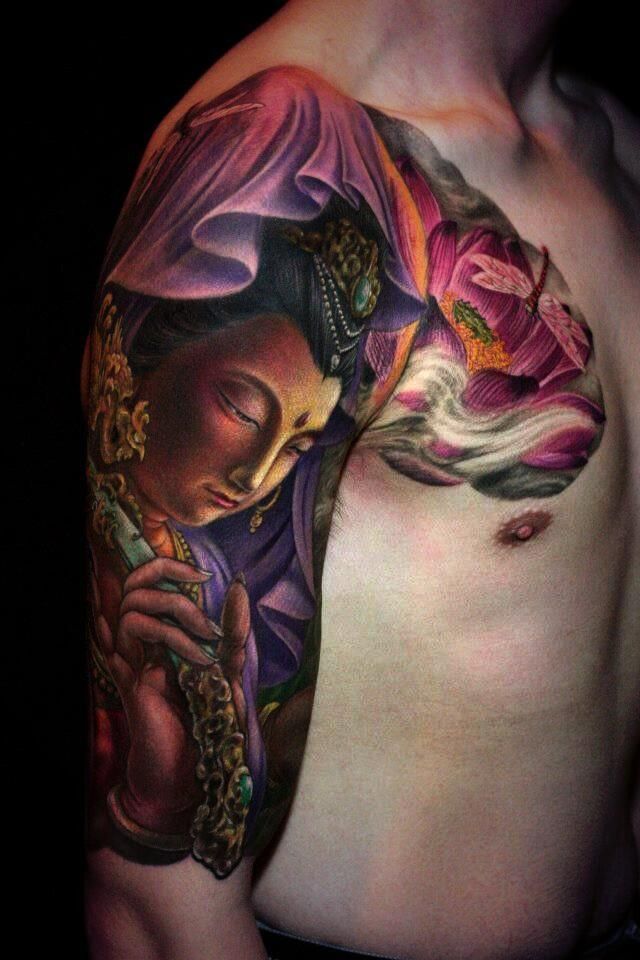
In addition to compassion and meditation, mudras also offer protection against negative energies. The Abhaya mudra, often depicted as the raised right hand with the palm facing outward, is a powerful mudra associated with fearlessness and protection. It represents the dispelling of fear and obstacles, offering a shield against negativity and harmful influences. People who choose this mudra for their Buddha tattoos seek strength and courage in their lives, aiming to overcome challenges and navigate through adversity.
The intricacy and variety of mudras provide a rich tapestry of symbolism within Buddha tattoos. Other mudras may include the Varada mudra, which signifies generosity and granting of wishes, or the Dhyana mudra, denoting profound meditation and enlightenment. Each mudra offers a unique opportunity for individuals to express their spiritual beliefs, aspirations, and values.
Dharmachakra
The Dharmachakra, also referred to as the Wheel of Law, holds great significance in Buddhism as it symbolizes the core teachings of Buddha. Derived from Sanskrit, “Dharma” translates to “truth” or “law,” while “chakra” translates to “wheel.” Together, they represent the continuous cycle of existence and the path towards enlightenment.
The Dharmachakra is typically depicted as a wheel with eight spokes, although variations with different numbers of spokes can also be found. Each spoke represents one of the Noble Eightfold Path, which encompasses the essential principles for leading a morally upright life and attaining spiritual liberation.
The Noble Eightfold Path includes right understanding, right thought, right speech, right action, right livelihood, right effort, right mindfulness, and right concentration. These aspects guide individuals on how to live a virtuous and compassionate life, ultimately leading them towards liberation from suffering and reaching enlightenment.
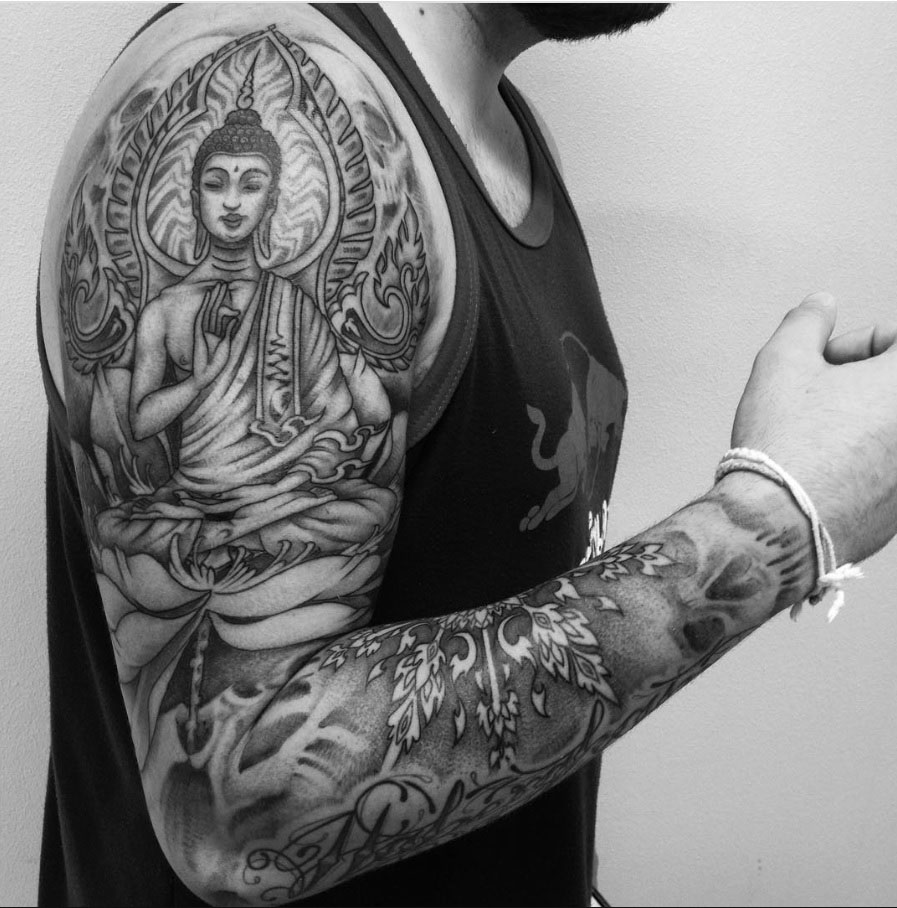
The circular shape of the Dharmachakra signifies the cyclical nature of existence, highlighting the eternal recurrence of life and death. It serves as a reminder that all things are interconnected and subject to change. Just as a wheel turns, so does life unfold in a continuous cycle of birth, aging, illness, and death.
Furthermore, the wheel’s motion illustrates the concept of karma, the law of cause and effect. The actions we perform, whether positive or negative, create ripples in the fabric of existence, influencing our future experiences and shaping our spiritual journey. By following the path of righteousness and adhering to the teachings of Buddha, individuals can break free from the cycle of suffering and attain liberation.
The Dharmachakra serves as a visual representation of these profound teachings, reminding Buddhists of their commitment to leading an ethical, compassionate, and mindful life. It encourages practitioners to cultivate wisdom, moral discipline, and mental clarity in order to progress along the path of enlightenment.
Bodhi Tree
The Bodhi tree, also known as the Tree of Awakening, is of immense importance in Buddhism. It gained its significance when Prince Siddhartha Gautama, who later became the Buddha, attained enlightenment while meditating under its shelter. This sacred tree holds a deep connection to the very essence of Buddhist teachings and serves as a symbol of spiritual awakening.
The historical Bodhi tree was located in Bodh Gaya, India, and although it no longer stands today, a descendant tree from the original is preserved at the same site. Buddhists from all over the world make pilgrimages to this revered location to pay their respects and seek inspiration.
A tattoo featuring the Bodhi tree carries profound meaning for individuals who choose to adorn their bodies with this image. It represents their personal journey towards enlightenment and inner transformation. The tattoo serves as a constant reminder of the pursuit of knowledge, wisdom, and self-realization—a visual representation of the path they have chosen to follow.
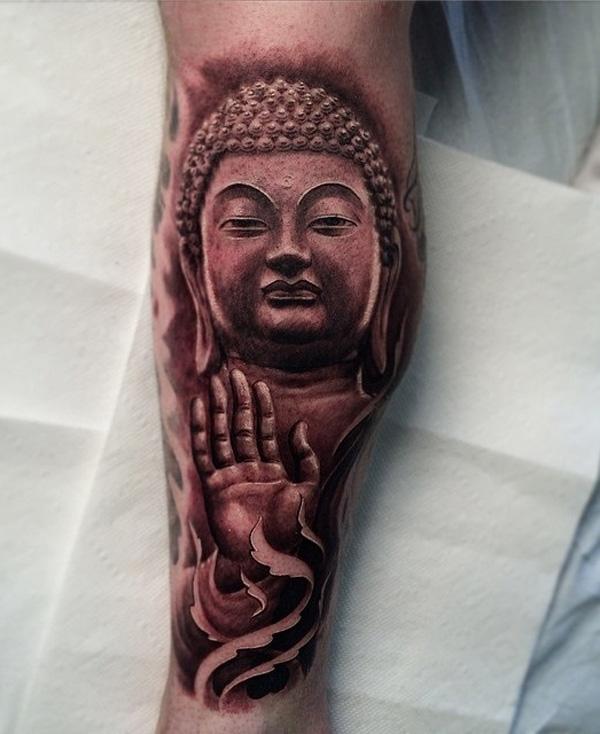
Moreover, the Bodhi tree embodies the concept of impermanence in Buddhism. Just as the leaves of a tree constantly change and fall, life is transient, ever-evolving, and subject to constant flux. By embracing this truth and seeking awakening, individuals wearing a Bodhi tree tattoo express their willingness to go beyond the material world and delve into the depths of spiritual exploration.
The intricate design of the tattoo often includes the distinctive heart-shaped leaves and branches of the Bodhi tree, capturing its unique appearance. Some people may choose to incorporate other elements such as lotus flowers, Dharma wheels, or Sanskrit mantras to enhance the symbolism of their tattoo.
Buddha Tattoo Design: Finding Your Sacred Expression
When it comes to designing your own Buddha tattoo, the possibilities are endless. The key is to find a design that resonates with your spiritual journey and personal beliefs. Here are a few design ideas to inspire you:
Minimalist Silhouette
A minimalist silhouette of Buddha is a design option that encompasses simplicity while still exuding a striking and impactful presence. This design choice captures the essence of Buddha’s enlightened being through the use of clean lines and understated elegance.
The minimalist approach focuses on stripping away unnecessary details, leaving only the fundamental outline of Buddha’s figure. By reducing the form to its most basic elements, the silhouette becomes instantly recognizable and carries a sense of tranquility and spiritual significance.
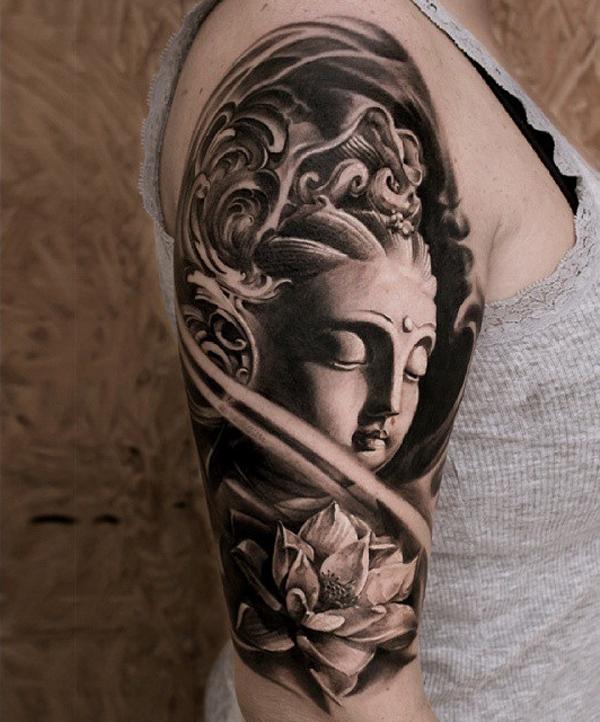
The simplicity of the minimalist silhouette allows for versatility in various design contexts. Whether incorporated into a piece of artwork, sculpture, or even as a wall decal, this design option can seamlessly blend into any space, be it a meditation room, a yoga studio, or a contemporary living area. Its uncluttered and streamlined aesthetic ensures that it harmonizes with different interior styles, from modern and minimalist to traditional and eclectic.
The beauty of the minimalist silhouette lies in its ability to evoke a sense of calm and contemplation. The clean lines and absence of extraneous details draw attention to the overall shape, emphasizing the peaceful and enlightened nature associated with Buddha. This design option serves as a visual reminder to cultivate inner peace, mindfulness, and enlightenment.
Intricate Mandala
Incorporating mandala patterns into your Buddha tattoo can enhance its meaning by adding depth and complexity. Mandalas are intricate geometric designs that hold deep spiritual significance in various cultures, particularly in Buddhism. These patterns represent the universe, wholeness, and the interconnectedness of all things.
When merged with a Buddha image, mandalas bring an extra layer of symbolism to the tattoo. The image of Buddha already holds immense significance as a representation of enlightenment, compassion, and inner peace. By integrating mandala patterns, you create a visual representation that goes beyond the surface level, conveying a profound message.
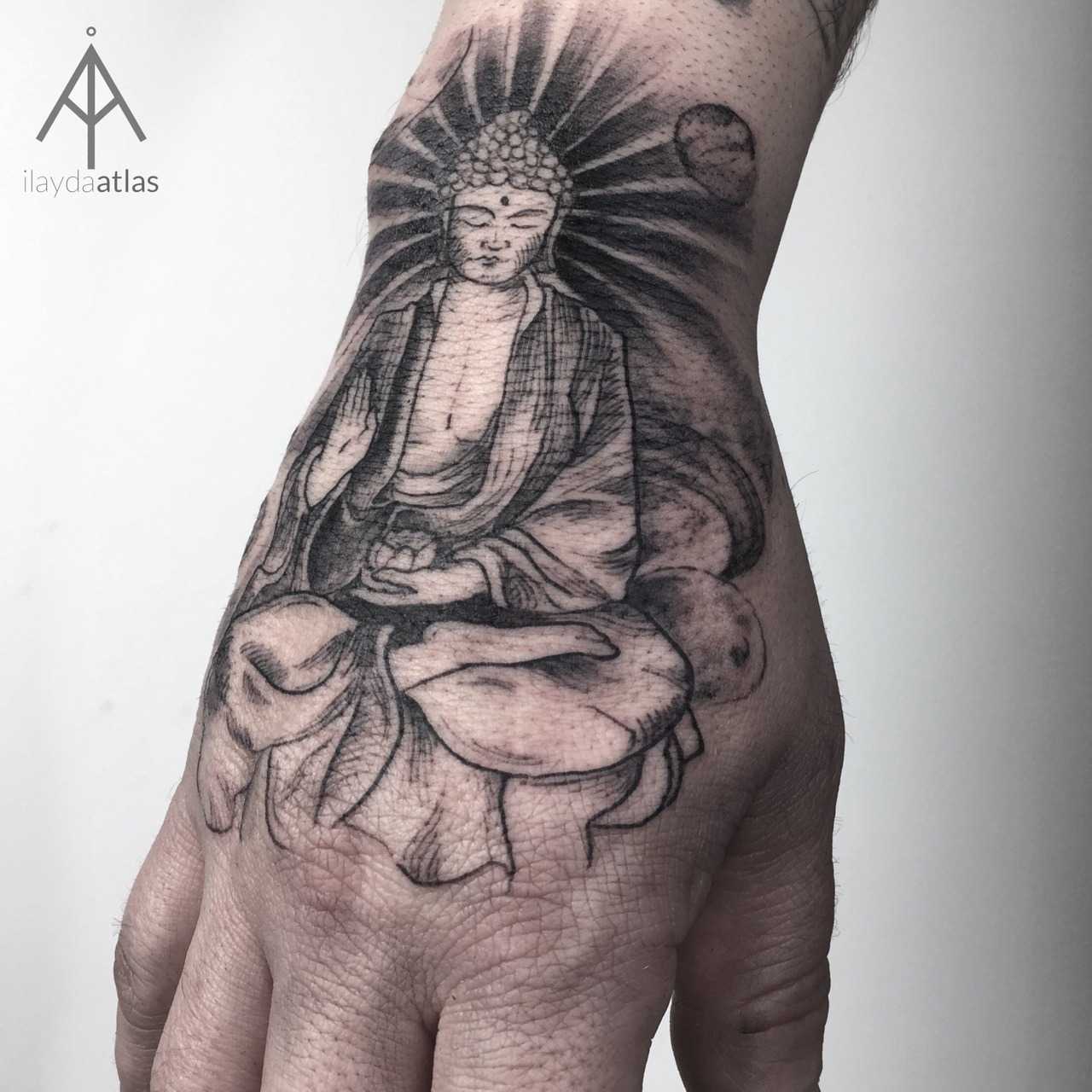
Mandalas, with their precise geometry and harmonious symmetry, symbolize balance and unity. They provide a sense of order within the design, reflecting the equilibrium sought in Buddhist teachings. This incorporation signifies the quest for harmony not only within oneself but also in relation to the external world.
Watercolor Masterpiece
Opting for a watercolor-style tattoo can be a captivating and unique way to portray the teachings and spiritual energy of Buddha. Watercolor tattoos, characterized by their vibrant and fluid appearance, create a sense of ethereal beauty that perfectly aligns with the essence of Buddhism.
Watercolor tattoos take inspiration from the technique of watercolor painting, which involves blending and diluting pigments to create soft, flowing hues. By incorporating this style into a Buddha-inspired tattoo, you can achieve a visually stunning representation that captures the tranquility and wisdom associated with Buddha’s teachings.
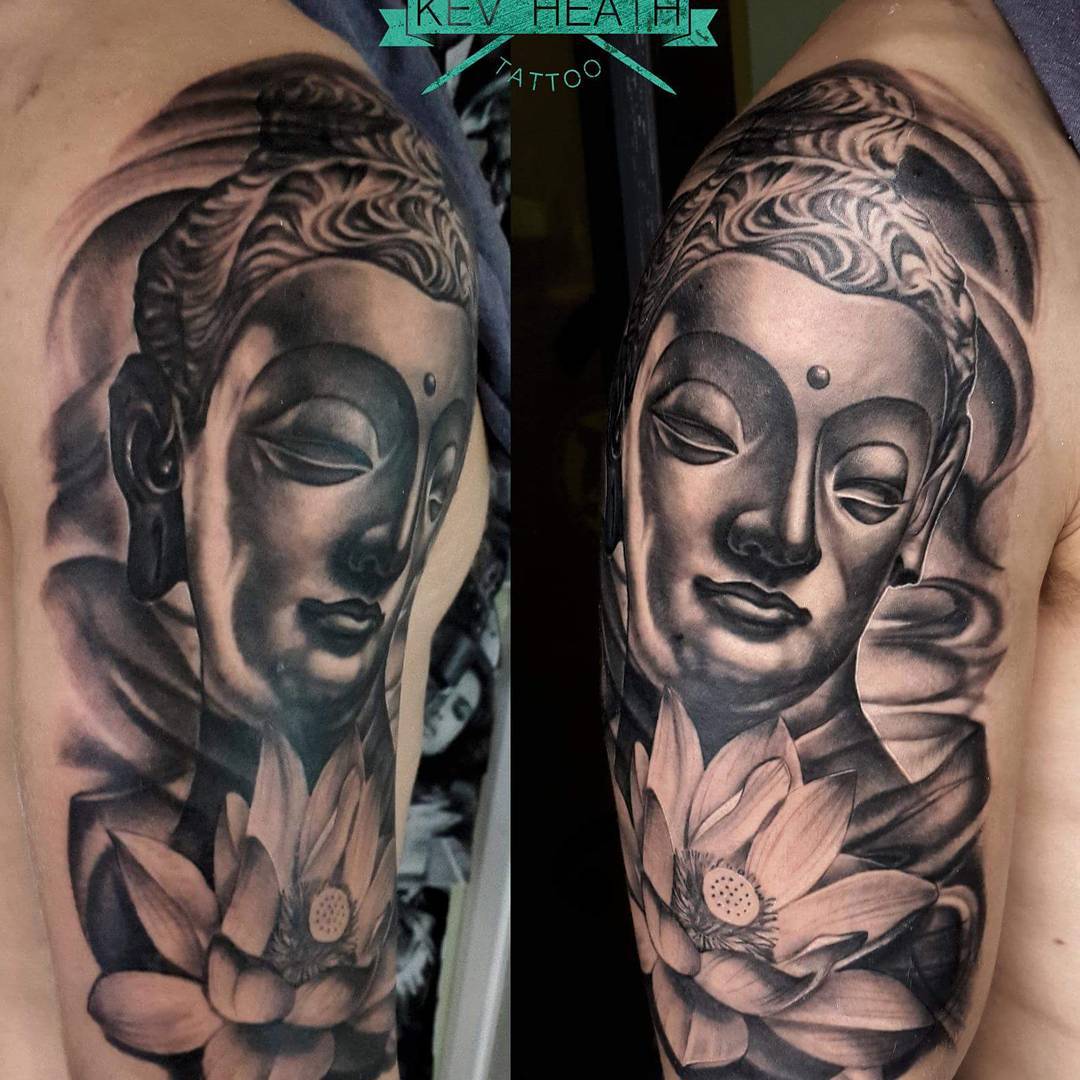
The use of vibrant colors in watercolor tattoos allows for a dynamic portrayal of the spiritual energy that surrounds Buddhist philosophy. Shades of blues, purples, pinks, and greens can be employed to depict the ever-changing nature of existence and the interconnectedness of all beings. The fluidity and movement created by the watercolor technique add an element of life and vitality to the tattoo, emphasizing the constant evolution and growth advocated by Buddha.
Moreover, the ephemeral quality of watercolor tattoos conveys a sense of impermanence, a fundamental concept emphasized in Buddhism. This impermanence reminds us of the transient nature of life and encourages us to appreciate the present moment. The delicate blend of colors and soft edges in a watercolor-style tattoo symbolize the fleeting nature of experiences, encouraging mindfulness and a deep appreciation for the present.
Enso Circle
The Enso circle is a symbolic representation commonly found in Zen Buddhism and Japanese calligraphy. Created with a single freehand brushstroke, this circular shape holds deep philosophical meaning and embodies several profound concepts.
At its core, the Enso circle symbolizes enlightenment, capturing the essence of awakening and spiritual growth. It represents the moment of clarity when one’s mind becomes free from distractions and attains a state of pure consciousness. The simple and unbroken brushstroke used to form the circle signifies the continuity of life and the interconnectedness of all things.
Furthermore, the Enso circle reflects the concept of strength. Despite its seemingly simple appearance, it requires skill, focus, and control to create a perfect circle with a single stroke. This symbolism reminds us that true strength lies in simplicity, discipline, and the ability to overcome obstacles with grace and ease.
Eastern-inspired Sleeve
For individuals in search of a more extensive and intricate tattoo design, an Eastern-inspired sleeve tattoo can be a captivating choice. This particular style draws its inspiration from Buddhist philosophy, incorporating various symbolic elements like lotus flowers, koi fish, and sacred mantras.
The lotus flower holds immense significance within Buddhism as it represents purity, spiritual growth, and enlightenment. It blossoms gracefully out of muddy waters, signifying the beauty that can emerge from difficult circumstances. Including lotus flowers in your sleeve tattoo can visually convey these profound philosophical concepts while adding an aesthetic appeal to the design.
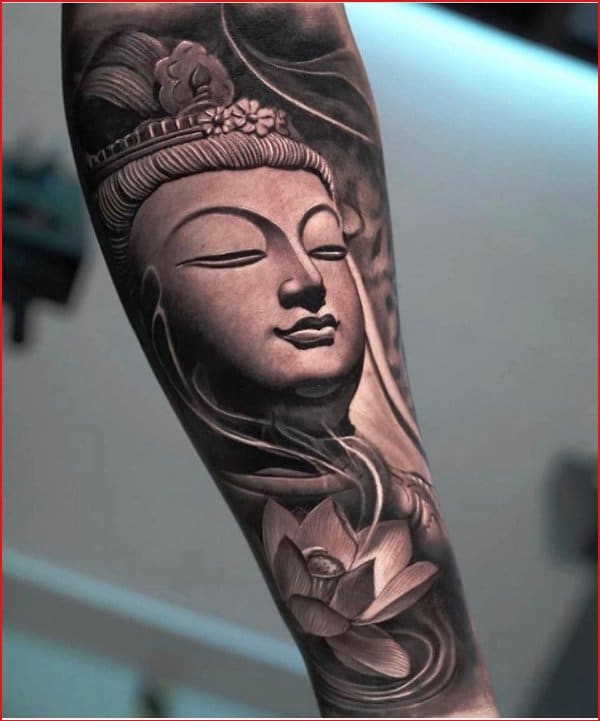
Koi fish, known for their vibrant colors and graceful movements, are another popular symbol associated with Buddhism. These fish are often depicted swimming upstream, which symbolizes perseverance, determination, and the ability to overcome obstacles. Incorporating koi fish imagery into your sleeve tattoo not only adds striking visual elements but also conveys the idea of personal strength and resilience.
Whatever design you choose, ensure that it reflects your personal connection with Buddhist principles and carries a profound meaning that resonates with your soul.
Conclusion: Exploring the Cultural
In conclusion, a Buddha tattoo carries profound meaning and serves as a visual representation of one’s spiritual journey and connection to Buddhist philosophy. The choice of design elements, placement, and customization options allows individuals to create a tattoo that reflects their unique beliefs and experiences. However, it is essential to approach Buddha tattoos with respect and cultural sensitivity, ensuring that they are not used solely for aesthetic purposes. By delving into the symbolism and significance behind Buddha tattoos, we can appreciate the beauty and spiritual essence that these tattoos represent.
So, whether you are seeking enlightenment, inner peace, or a constant reminder of the Buddha’s teachings, a Buddha tattoo can serve as a lifelong guide on your path towards spiritual growth and self-discovery.

I am Harvey Berry, a tattoo enthusiast who has immersed himself in the diverse world of ink, passionately exploring the beauty and artistry within each tattoo. My mission extends beyond uncovering the aesthetics of tattooing; it involves sharing in-depth knowledge across all aspects of this art form.
Fueled by genuine curiosity and love for every facet of tattooing, I have diligently crafted well-researched articles, with a special focus on the Tattoo Meaning of Impeccable Nest section. Here, my aim is to help the tattoo community gain a deeper understanding of the meanings and values embedded in each tattoo.
One of my primary goals is to encourage responsible decision-making when it comes to getting inked. I recognize that choosing to get a tattoo is a significant personal decision that requires careful consideration. Hence, I provide diverse resources covering the meaning of tattoos, the tattooing process, aftercare tips, and other valuable information.
Whether you are a seasoned tattoo enthusiast or embarking on your first exploration of the world of body art, I aspire to be a reliable resource for you at every step of your journey. I hope that my extensive knowledge of tattoos, especially in the Tattoo Meaning section, will assist you in finding inspiration to express yourself through the art of tattoos.
